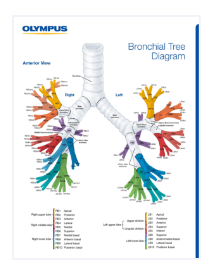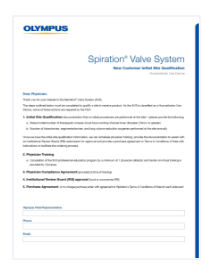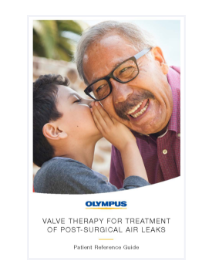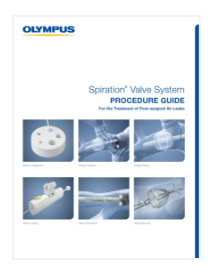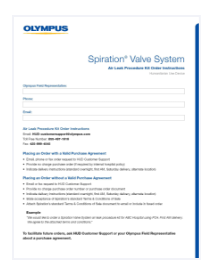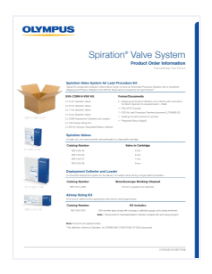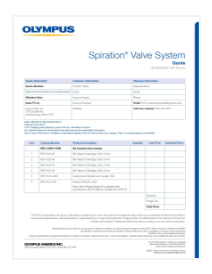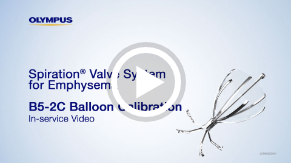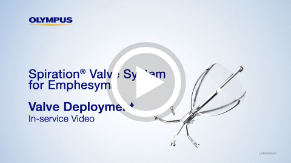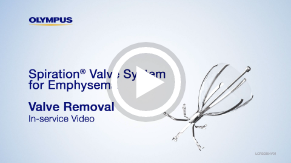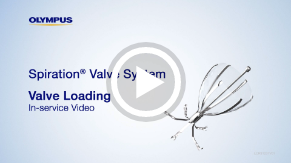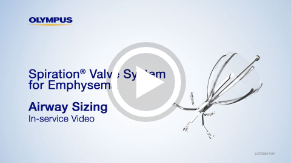Spiration® Valve System for
Prolonged Air Leaks
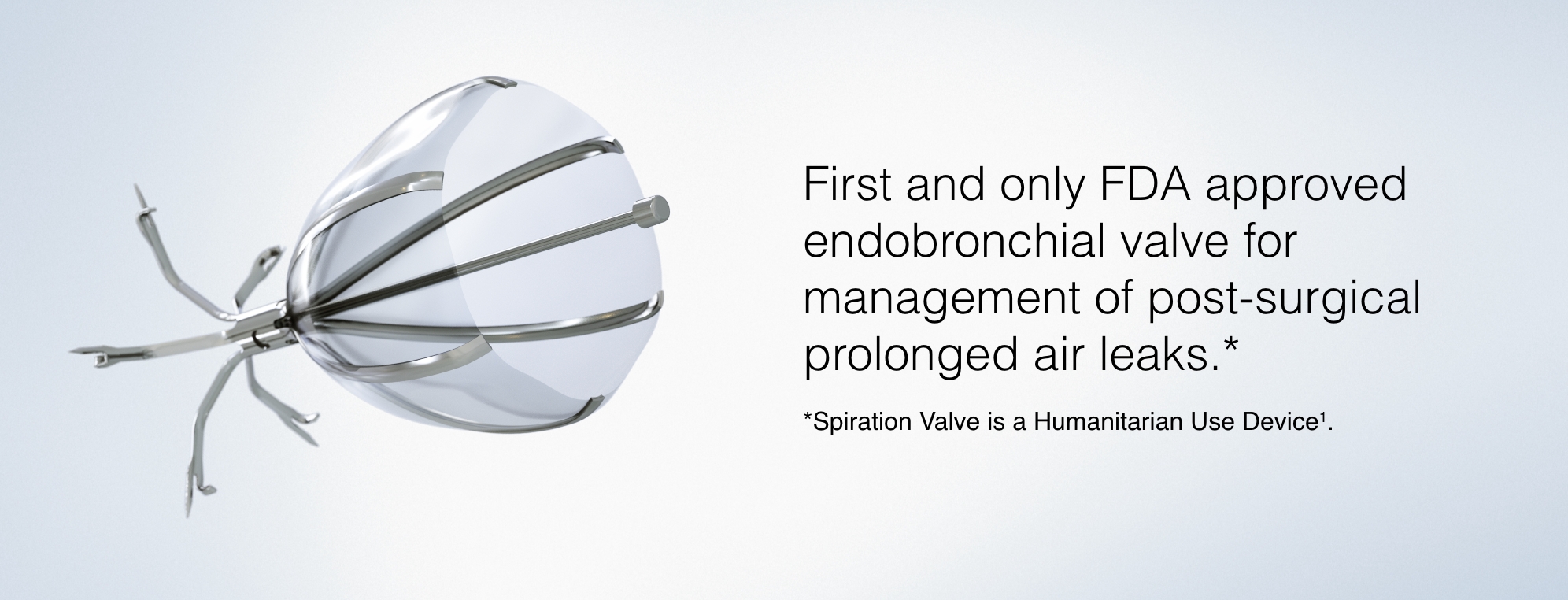
Physicians have been using the Spiration Valve System as a minimally invasive solution for the management of post-surgical prolonged air leaks for over a decade. With a growing body of clinical evidence, the Spiration Valve bronchoscopic procedure is proving to be a feasible and safe approach that can favorably affect the course of patients with post-pulmonary resection air leaks.2
Endobronchial Valve Treatment
For Management of Prolonged Air Leaks
Clinical Dilemma
As the most common complication following surgical resection, prolonged air leaks have caused a clinical dilemma by increasing hospitalization, morbidity, and cost; ultimately, creating an unnecessary, additional burden for the healthcare system.Traditional Management
Treating prolonged air leaks with a chest drainage system and holding patients for observation is an approach that has led to an increased length of hospital stay. 3,4 This traditional management method has caused frustration for both the provider and the patient because it can lead to more invasive interventions if the leak does not have a timely resolution. 3,4,5Minimally Invasive Solution
The Spiration Valve System procedure provides pulmonologists and thoracic surgeons a minimally invasive, proactive treatment option for limiting distal airflow to damaged lung that can result in early resolution of air leaks.5 Interventions, such as endobronchial valve treatment, minimizing air leak or allowing outpatient management, will improve financial performance and hospital margins for lung surgery.
The Right Valve
Engineered for Dynamic Lung Anatomy
-

Secure Valve Positioning
The first and only valve with anchors to prevent migration and expectoration.
-
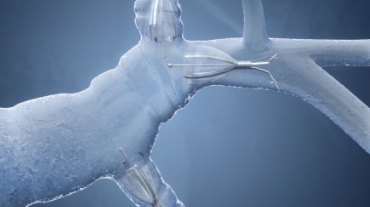
Versatile Airway Access
Anchor design allows more flexibility as to where to deploy valves independent of airway depth or access to a carina.
-
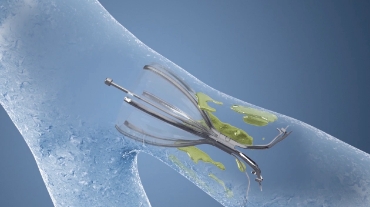
Minimal Tissue Contact
The first and only valve with an umbrella design to allow natural movement of air and mucus in the proximal direction.
-
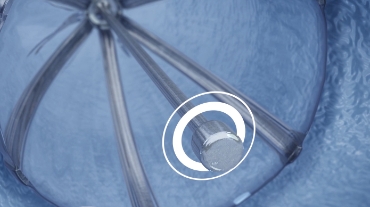
Easy Valve Removal
The first and only valve designed to facilitate retrieval with 360° access to the removal rod.
-
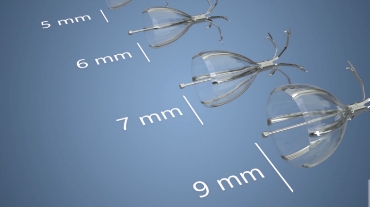
Custom Fit
Multiple sizing options with 4 valve sizes ranging from 5mm – 9mm.
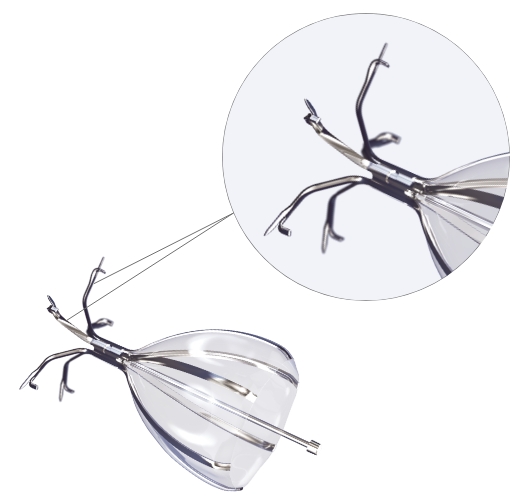
Why Choose the Spiration Valve System?
A Decade of Commercial Experience
Since 2008, the Spiration Valve System has been available in the US Market as the first and only FDA approved endobronchial valve for management of post-surgical prolonged air leaks. Over the past decade, the body of clinical evidence and experience continues to grow for the use of endobronchial valves, which has allowed physicians to develop a personalized skillset with using the Spiration Valve.*
Airway Isolation Method
Developed and Refined Supporting Thousands of Procedures
A systematic approach to locating and isolating air leaks is a critical step to successful treatment.

Block main bronchus to determine:
- If the leak can be stopped or reduced.
OR - Length of time it takes to see a change in the water seal monitor.
Systematically work from proximal to distal:
- Occlude upper lobe.
IF NO CHANGE,
- Move to the lower lobe(s).
- Once a target lobe is identified, test the individual subsegments


The air way is identified:
Place a valve.

IS THE AIR LEAK RESOLVED?

Repeat process to isolate additional leaks as dynamics may have changed since valve placement.* Continue until all major and minor leaks have been identified.

The procedure is complete.
Spiration Valve Procedure
How the Valve Works
The Spiration Valve is an umbrella-shaped, one-way valve that once in place, limits airflow to damaged tissue while allowing trapped air and fluid to escape. As a result, this procedure can contribute to a substantial reduction or full resolution of an air leak.2
The Right Outcomes
A Decade of Clinical Experience
Traditional “wait and see” approaches can lead to increased length of stay and frustration for both the provider and patient.6,7
Patients treated with SVS spent a median of four days in the hospital post-treatment, with 93.8% of treated patients having a positive response.2
Clinical Publicationpositive response2
hospital stay2
Download Resources
Instructional Videos
Treatment of
Severe Emphysema
Referring
Physicians
Patient
Information
- Instructions for Use, Spiration Valve System, HUD.
- Abu-Hijleh M, Styrvoky K, Anand V, et al. lntrabronchial Valves for Air Leaks After Lobectomy, Segmentectomy, and Lung Volume Reduction Surgery. Lung, 2019: 197, 627-633.
- Cerfolio RJ and Bryant AS. The benefits of continuous and digital air leak assessment after elective pulmonary resection: a prospective study. Ann Thorac Surg 2008;86:396-401.
- Stolz AJ, Schutzner J, et al. Predictors of prolonged air leak following pulmonary lobectomy. Eur J Cariothorac Surg 2005;27:334-336.
- Wood DE, Cerfolio RJ, Gonzalez et al. Bronchoscopic management of prolonged air leak. Clin Chest Med 31 2010 127-133.
- Mahajan AK, Doeing DC, Hogarth DK. Isolation of persistent leaks and placement of intrabronchial valves. J Thorac Cardiovasc Surg 2013;145:626-30.
- Dooms C, et al. Bronchial valve treatment for pulmonary air leak after anatomical lung resection for cancer. Eur Respir J 2014; 43: 1142-1148.
- INDICATION FOR USE: The Spiration Valve System is a device to control prolonged air leaks of the lung, or significant air leaks that are likely to become prolonged air leaks following lobectomy, segmentectomy, or Lung Volume Reduction Surgery (LVRS). An air leak present on post-operative day 7 is considered prolonged unless present only during forced exhalation or cough. An air leak present on day 5 should be considered for treatment if it is: 1) continuous, 2) present during normal inhalation phase of inspiration, or 3) present upon normal expiration and accompanied by subcutaneous emphysema or respiratory compromise. Spiration Valve System use is limited to 6 weeks per prolonged, postoperative air leak.
- CAUTION: Humanitarian Use Device. Authorized by Federal law for use in the control of prolonged air leaks of the lung, or significant air leaks that are likely to become prolonged air leaks, following lobectomy, segmentectomy, or Lung Volume Reduction Surgery (LVRS). The effectiveness of this device for this use has not been demonstrated. Federal law restricts this device to sale by or on the order of a physician






























